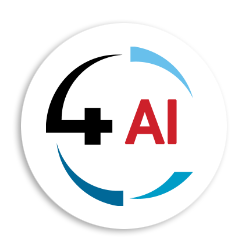Case Studies - Operational Technologies
How Organisations Are Changing Enterprise Workflow Management

An Aspen Tech COVID-19 Case Study
The sequences of activities are typically part of larger tasks defined as ‘business processes.’ In today’s industrial world, business processes have become more flexible, smarter and richer and that’s forced change on enterprise workflows.
This blog highlights real-life customer case studies that demonstrate the ways that organizations are using Aspen Enterprise Insights™ to refine and redefine enterprise workflows so they are more agile and adaptive to the COVID-19 situation. It explains how they are making faster business decisions by visualizing resource deviations automatically and identifying pandemic related business risks early. We will also review how customers are adding new data, such as COVID-19 vaccinations, as they are continually updating their business processes.
Agile workflows bridge people and process
In the industrial sector, organizations tend to be reliant on operationally heavy tasks that depend significantly on integrated and interworking business processes to execute on their overall objectives. One of the biggest challenges they face is that the information required to build and streamline these workflows are proliferated across distinct, unlinked systems ranging from legacy data management solutions to Microsoft Excel worksheets, to Lotus Notes and sometimes even paper-based processes. People-centric programs such as Health, Safety, Security & Environmental (HSSE) management activities and work permits are examples of some the systems that are most constrained. On the project side, value assurance review programs and risk assessment are examples of systems that are also challenged.
COVID-19 has exacerbated this situation because of the pressing need to integrate people, data and workflows into a highly automated, digital business process with a seamless flow of work and information. A simple and effective real-life example is illustrated by one of AspenTech’s customers who set up a detailed COVID-19 tracker workflow to capture information about cases across their organization, and automatically fed it into their HSSE system. They built a contact tracing workflow based-off the COVID-19 tracker to notify of potential risks, through real-time notifications and pushed the updated records to their work shift planning system.

Smarter workflows help manage resources more efficiently
COVID-19 has changed how people work today and how their organizations manage resources in a dynamic, highly responsive manner. Agile enterprise workflow management capability has been created to track COVID-19 information across an organization to – (i) rapidly adapt their resource planning to ensure healthy, safety and security, (ii) configure, spawn-up and regulate new workflows based on fast-changing conditions and (iii) facilitate site-level and organization-level statistics and reporting.
Today’s enterprise needs to understand how many employees and contractors many be suffering from COVID-19 so that they can reassign their tasks to others. They also need to track trends in cases, recoveries, hospitalizations – across infection waves – to define customized triggers that they can build based on specific conditions that launch targeted business actions.
COVID-19 exposed a critical need for agile enterprise workflow management solutions that adapt to changing business processes by capturing and integrating information across diverse data sources and assimilating it into higher-level, aggregated reporting structures for enterprise-wide decision making. This requires agile, flexible and extensible workflows that go beyond the limitations of ‘static’ reporting systems that don’t work in a global pandemic world.
An example of a real-life implementation of a dynamic COVID-19 reporting system based on Aspen Enterprise Insights is illustrated below:

Richer workflows require dynamic, high-value data
As many countries are starting to roll-out the COVID-19 vaccinations in the coming weeks and months, industrial organizations can update their agile enterprise workflows to leverage dynamic, high-value data. New enterprise workflows can reflect the various doses of vaccinations, enable customized triggers and notifications for due dates, and track vaccination adoption across their organization. Using Aspen Enterprise Insights which is part of AspenTech’s AIoT Hub, this data is kept highly confidential in each customer’s own environment and offering the flexibility of connecting various business functions to optimize existing work processes and create new ones.
Aspen Enterprise Insights is a unique hybrid-cloud-based software product with a flexible enterprise visualization and workflow management solution that delivers real-time decision support across your enterprise. You can read more here.

